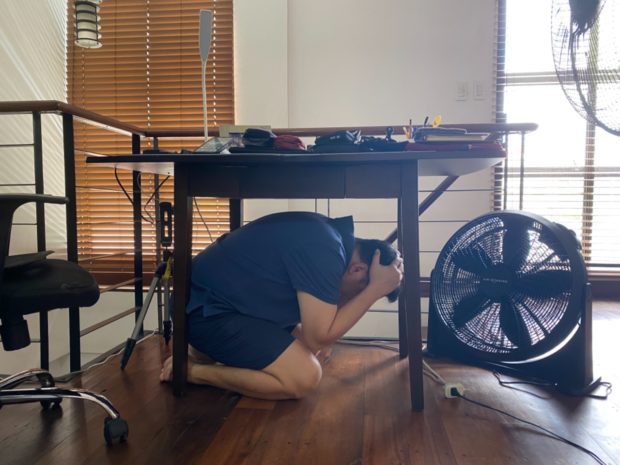Globe ensures earthquake preparedness among employees, facilities
Globe continues to foster a culture of readiness for all of its employees and facilities in the event of a strong earthquake by joining the Nationwide Simultaneous Earthquake Drill (NSED) last March.
Organized by the National Disaster Risk Reduction and Management Council (NDRRMC), the NSED is done on a quarterly basis to properly assess the readiness, responsiveness, and capabilities of the different companies and institutions should a strong earthquake hit the country.
Employees at Globe’s offices and technical facilities took part in the first quarter NSED which was done virtually due to the COVID-19 pandemic. Once the alarm sounded off, they immediately exercised the “Duck, Cover and Hold” or the DCH routine, a measure that can potentially reduce injury and death during earthquakes. However, evacuation drills were eschewed to keep in line with health and safety protocols.
“The safety of our employees is always on top of our mind so we continuously endeavor to establish a culture of readiness in the organization even under the work-from-home set-up should a massive earthquake occur,” said Rizza Maniego-Eala, Globe’s Chief Risk Officer.
Previous Globe practices of earthquake drills within its corporate offices and technical sites have shown employees’ acute preparedness as they displayed immediate responsiveness during their participation. Globe offices are also equipped with hard hats, first aid and emergency response kits for the employees to use in the event of an evacuation.
This time as the majority of employees are working from home, Globe made sure to equip its workforce and their households with relevant information to ensure their safety during natural calamities. Employees were advised to prepare their own survival kits or Grab N’ Go bags that contain the essentials for emergency evacuations.
Globe also consistently practices Call Tree exercises for proper employee accounting in case of an emergency, crisis, or disaster and has also set up a hotline that employees can get in touch with for assistance.
Aside from being a regular participant in earthquake drills that are being conducted by government agencies, the company’s Occupational Health and Safety (OHS) team also annually conducts an integrated earthquake and fire drill in different Globe sites across the country to train and to refresh site personnel on appropriate emergency response.
Globe’s emergency response procedures are guided by its OHS Policy and the OHS Management System under ISO 450001 which is part of the company’s enterprise-wide certification on Integrated Management System. This is also aligned with the company’s overall Business Continuity Management System under ISO 22301 which ensures the continued delivery of services in the event of disasters.
The OHS team also regularly organizes training for the Emergency Response Team (ERT) members to make sure they are fully capable of providing support and response during emergency situations. This includes first aid and basic life-support training and fire emergency response.
Furthermore, the OHS team evaluates the Personal Protective Equipment (PPE) in the different Globe sites as well as ensures that the company complies with legal and regulatory requirements while applying best practices across the organization.
All these actions are part of Globe’s commitment to the United Nations Sustainable Development Goal No. 11—Sustainable Cities and Communities—which highlights the importance of making cities inclusive, safe, resilient, and sustainable. It also calls for a holistic disaster risk management at all levels in line with the Sendai Framework for Disaster Risk Reduction 2015-2030 through the integration of policies and plans towards inclusion, resource efficiency, mitigation and adaptation to climate change, and resilience to disasters.
Know more about Globe’s initiatives by visiting https://www.globe.com.ph/.

